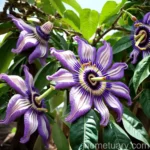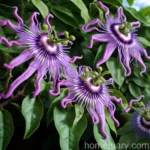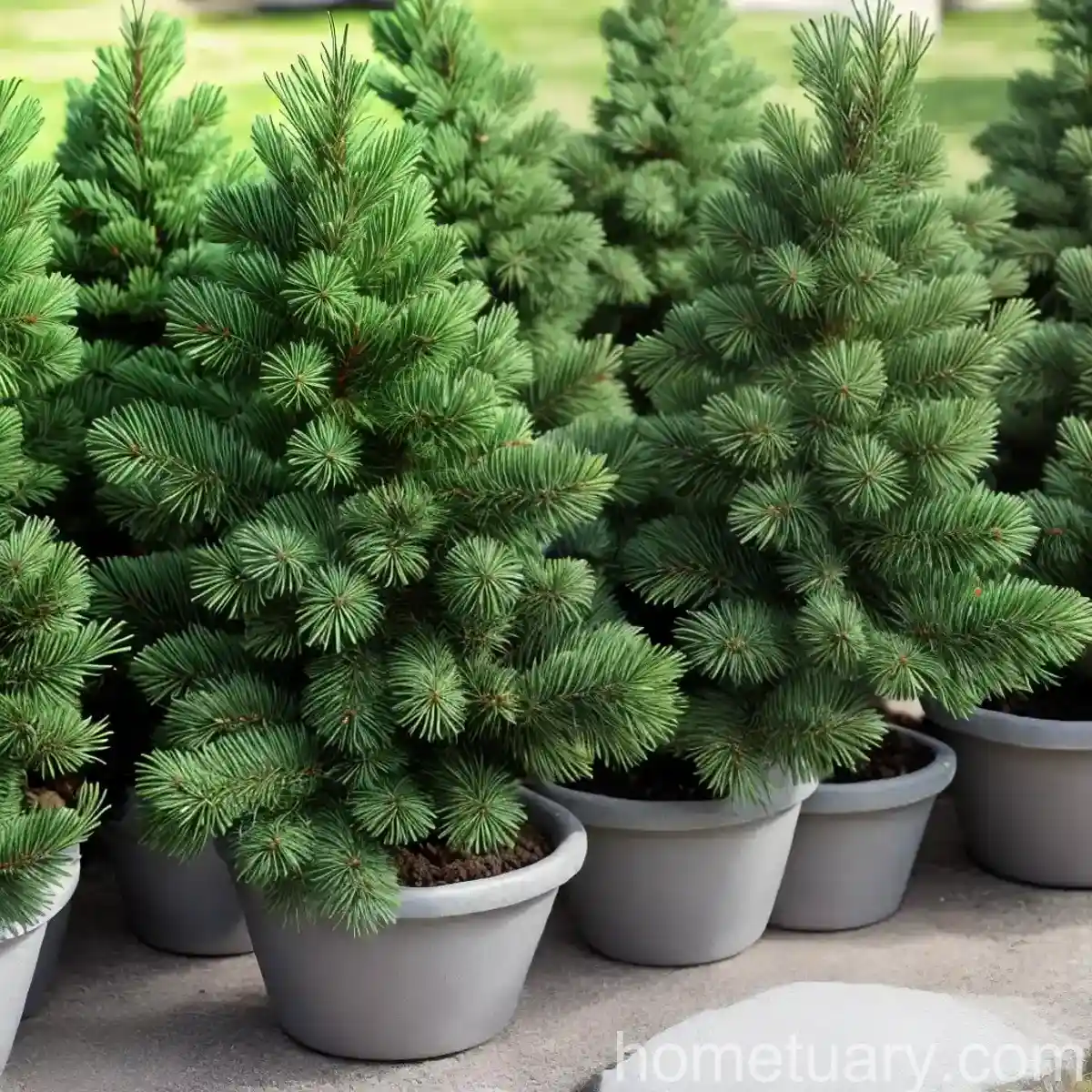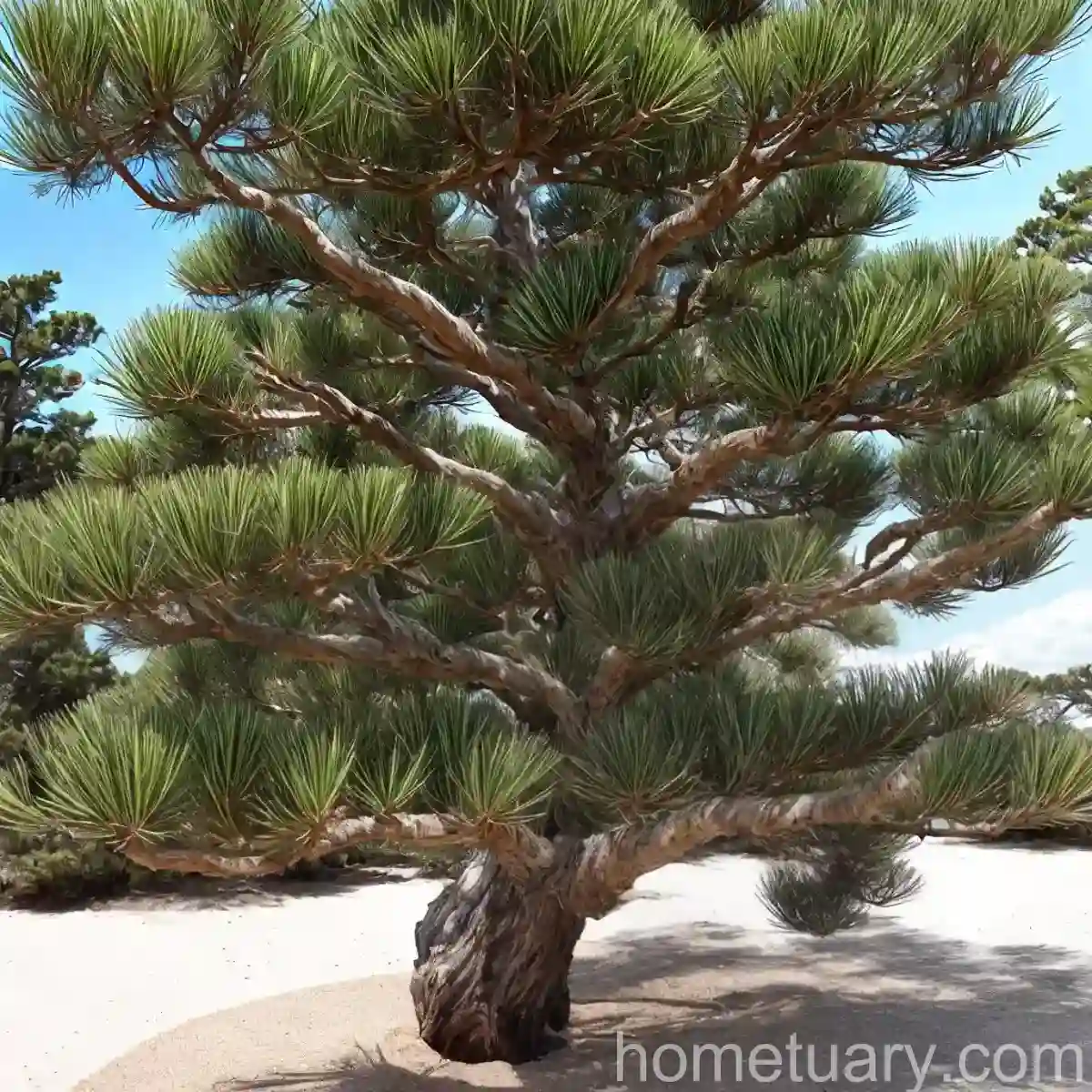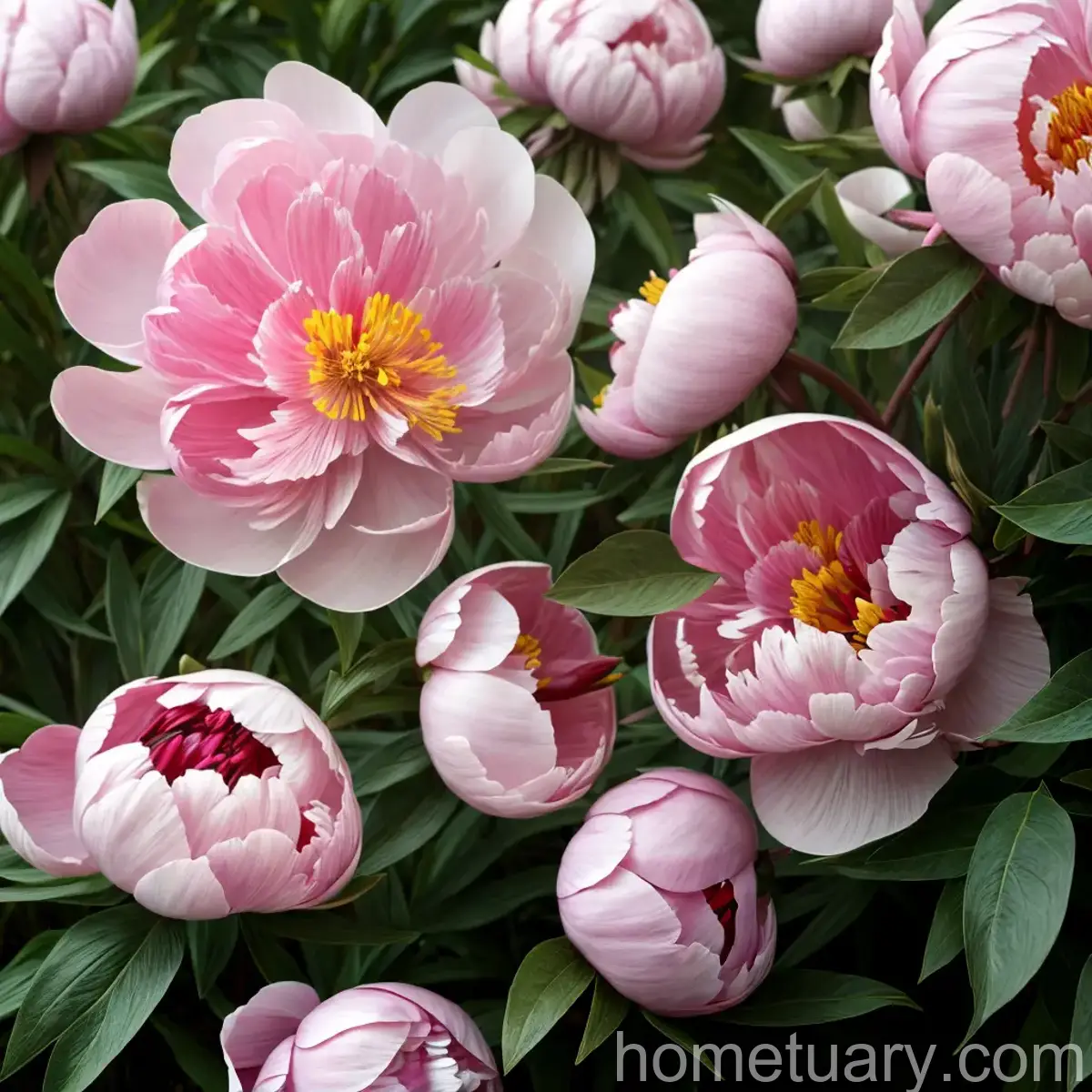Red Passion Flower (Passiflora coccinea): A Comprehensive Care Guide
Passiflora coccinea, commonly known as the red passion flower, is a member of the Passifloraceae family, renowned for its stunning, intricate flowers. As a plant scientist, I am excited to share a comprehensive care guide for this vibrant and versatile vine. In this article, I will delve into the culture, uses, water and sunlight needs, fertilizer requirements, soil preferences, pruning methods, propagation techniques, and more. Whether you are already a passionate red passion flower enthusiast or are just discovering this remarkable plant, this guide will equip you with the knowledge you need to cultivate and enjoy this beautiful species to its fullest potential.
What is Red Passion Flower (Passiflora coccinea)?
Passiflora coccinea, also known as the red passion flower, is a striking perennial vine native to South America, particularly in Brazil and Paraguay. This captivating vine is characterized by its vibrant red flowers, adorned with a crown of filaments and stamens, making it a sight to behold in any garden or landscape. As a member of the Passifloraceae family, this species is closely related to other passion flower varieties like Passiflora incarnata (purple passion flower) and Passiflora edulis (passion fruit vine).
Key Takeaways – Red Passion Flower (Passiflora coccinea)
Culture
The red passion flower thrives in warm, tropical climates and is well-suited for cultivation in USDA hardiness zones 9-11. It is known for its fast growth rate and can reach a height of 15-20 feet, making it an excellent choice for trellises and arbors.
Uses
The red passion flower is not only recognized for its ornamental value but also for its potential medicinal uses. Additionally, its nectar-rich flowers attract pollinators like butterflies and hummingbirds, adding to its ecological significance.
Water
Moderate watering is essential for the red passion flower, especially during its active growing season. It is important to maintain consistent soil moisture without allowing the roots to become waterlogged.
Sunlight
This vine thrives in full to partial sunlight. Providing it with at least 6 hours of direct sunlight each day will ensure optimal growth and abundant flowering.
Fertilizer
Feeding the red passion flower with a balanced, slow-release fertilizer during the growing season will support its vigorous growth and flower production.
Soil
Well-draining, fertile soil with a slightly acidic to neutral pH (around 6.1-7.0) is well-suited for the red passion flower. Amending the soil with organic matter can further enhance its growing conditions.
Pruning
Regular maintenance pruning is essential to manage the vine’s growth, encourage branching, and promote flowering. Pruning is typically conducted in late winter or early spring before the onset of new growth.
Propagation
Red passion flowers can be propagated from seeds, cuttings, or by layering. Each method offers its own unique benefits and is relatively straightforward with the right techniques.
Container Popularity
Container gardening with red passion flowers is gaining popularity, particularly for those who want to enjoy this vine in smaller spaces or on patios and balconies.
Common Diseases
While the red passion flower is relatively resilient, it can be susceptible to certain diseases such as fungal infections and root rot, especially in conditions of poor air circulation and overly wet soils.
Disease Diagnosis
Early detection and proper diagnosis of diseases are crucial for effective management and prevention, ensuring the vine’s long-term health and vitality.
Common Pests
Red passion flowers may encounter pests such as aphids, spider mites, and caterpillars. Implementing integrated pest management strategies is key to controlling and preventing pest infestations.
Botanist’s Tips
Insightful tips from botanists can help maximize the potential of the red passion flower, from optimizing growing conditions to leveraging its unique characteristics in garden design.
Fun Facts
Discovering intriguing and captivating facts about the red passion flower can enrich your appreciation for this remarkable vine, from its historical symbolism to its role in natural remedies.
Links to External Resources
Access external resources to further expand your knowledge and understanding of the red passion flower, its care, and its diverse uses.
Now, let’s delve into each of these aspects in detail to provide a comprehensive care guide for the red passion flower (Passiflora coccinea).
Red Passion Flower Care Guide
Red Passion Flower (Passiflora coccinea) Plant Profile
- Scientific Name: Passiflora coccinea
- Common Name: Red Passion Flower
- Family: Passifloraceae
- Native Habitat: South America, particularly in Brazil and Paraguay
- USDA Hardiness Zones: 9-11
- Growth Rate: Fast
- Mature Height: 15-20 feet
- Flower Color: Red
- Flowering Season: Summer to fall
- Special Features: Intricate flowers, attracts butterflies and hummingbirds
Red Passion Flower Characteristics
The red passion flower is celebrated for its stunning and intricate flowers, which serve as the focal point of its ornamental appeal. Some key characteristics of this captivating vine include:
-
Flower Structure: The red passion flower’s blossoms consist of five sepals, five petals, and a distinct arrangement of filaments and stamens, forming a crown-like structure. The rich red color of the flowers adds to their visual allure.
-
Foliage: The vine’s foliage is typically three-lobed and dark green, providing an attractive backdrop to the vibrant red blossoms.
-
Fragrance: Some varieties of red passion flower may emit a subtle, sweet fragrance, adding to the sensory experience of this ornamental plant.
-
Growth Habit: Red passion flowers are vigorous climbers, utilizing their tendrils to attach and ascend various supports such as trellises, fences, and arbors.
Understanding these characteristics is essential for appreciating the red passion flower’s unique beauty and optimizing its care. Now, let’s explore the key aspects of caring for this stunning vine.
Growing Red Passion Flower: Tips and Guidelines
Red Passion Flower Varieties
Several varieties and cultivars of the red passion flower are available, each offering subtle differences in flower color, size, and growth habit. Some popular varieties include:
- Passiflora coccinea ‘Red Fire’: Known for its intense red blossoms and compact growth habit, making it suitable for smaller garden spaces.
- Passiflora coccinea ‘Scarlet Flame’: This variety features larger flowers with striking scarlet hues and an extended flowering season.
Choosing the right variety that aligns with your aesthetic preferences and growing conditions can enhance your experience of cultivating the red passion flower.
Passiflora coccinea Plant Care Guide
For successfully growing and caring for the red passion flower, the following guidelines should be considered:
Red Passion Flower Water Requirements
Establishing consistent watering practices is crucial for the red passion flower’s overall health and vitality. While it is important to maintain moderate soil moisture, overwatering should be avoided to prevent issues such as root rot. Consider the following tips for watering:
-
Establish a Watering Schedule: During the active growing season, water the red passion flower deeply once or twice a week, ensuring that the soil is well-draining and that excess moisture can escape.
-
Monitor Soil Moisture: Assess the soil moisture regularly, particularly during periods of hot, dry weather, and adjust the watering frequency accordingly.
-
Mulching: Applying a layer of organic mulch around the base of the vine can help conserve soil moisture and regulate temperature fluctuations, promoting a healthy root environment.
Red Passion Flower Sunlight Requirements
Adequate sunlight is essential for the red passion flower to thrive and produce an abundance of vibrant blossoms. Ensure the following to meet its sunlight requirements:
-
Full to Partial Sun: Position the red passion flower in a location where it can receive at least 6 hours of direct sunlight each day. However, in hotter regions, providing light afternoon shade can help protect the vine from excessive heat and sunburn.
-
Optimize Sun Exposure: Regularly monitor the vine’s sun exposure, particularly during different seasons, and make adjustments to its placement as needed to ensure it receives the right balance of light.
Red Passion Flower Fertilizer Needs
Feeding the red passion flower with a balanced, slow-release fertilizer can provide the essential nutrients it needs for vigorous growth and prolific flowering. Consider the following fertilizer guidelines:
-
Selecting Fertilizer: Choose a fertilizer formulated for flowering vines or use a general-purpose balanced fertilizer with an NPK ratio of 10-10-10 or similar.
-
Application Frequency: Apply the fertilizer in early spring as new growth emerges, and repeat the feeding process every 4-6 weeks during the growing season. Avoid fertilizing in late summer to prevent encouraging tender growth that may be susceptible to frost damage in colder regions.
-
Follow Package Instructions: Adhere to the manufacturer’s instructions regarding the application rate and method, and always water the vine thoroughly after fertilizing to ensure proper nutrient uptake.
Red Passion Flower Soil Requirements
The soil composition and structure directly impact the red passion flower’s overall health and growth. Consider the following soil guidelines:
-
Well-Draining Soil: Ensure that the soil is well-draining to prevent waterlogging, which can lead to root rot and other moisture-related issues. Amending heavy clay soils with compost, peat moss, or perlite can improve drainage.
-
Soil pH: Aim for a slightly acidic to neutral soil pH in the range of 6.1-7.0. Testing the soil pH and making adjustments with suitable amendments can create an optimal growing environment for the vine.
-
Organic Matter: Enrich the soil with organic matter such as compost, well-rotted manure, or leaf mold to enhance fertility and improve its structure.
By understanding and addressing the red passion flower’s water, sunlight, fertilizer, and soil needs, you can lay the foundation for its healthy growth and abundant flowering. Now, let’s explore additional aspects of caring for this vibrant vine.
Pruning Red Passion Flower: Techniques and Best Practices
Proper pruning is essential for maintaining the red passion flower’s vigor, managing its growth habit, and promoting a profusion of blossoms. Consider the following pruning techniques and best practices:
Pruning Timeframe
The ideal time to prune the red passion flower is during late winter or early spring before the onset of new growth. This timeframe allows for the removal of any winter damage or spent growth while preparing the vine for the upcoming growing season.
Maintenance Pruning
Regular maintenance pruning is beneficial for managing the vine’s growth and shaping its form. Focus on the following pruning tasks:
-
Removing Dead or Damaged Growth: Trim away any dead, diseased, or damaged stems and branches, making clean cuts to promote healing and prevent the spread of potential issues.
-
Encouraging Branching: Prune the red passion flower to promote branching and lateral growth, which can lead to a fuller and more floriferous appearance.
-
Controlling Size: Trim back excessively long or unruly stems to maintain the desired size and prevent the vine from overwhelming its support structures or neighboring plants.
Pruning Techniques
When conducting pruning tasks, follow these techniques to ensure the best results and minimize any potential stress on the vine:
-
Use Clean, Sharp Tools: Utilize sharp and sanitized pruning shears or loppers to make clean cuts, reducing the risk of causing unnecessary damage to the plant.
-
Prune at Leaf Nodes: Make pruning cuts just above leaf nodes or outward-facing buds to encourage new growth in the desired direction and avoid leaving unsightly stubs.
-
Avoid Overpruning: While regular maintenance pruning is beneficial, avoid overly aggressive pruning, as this may impact the vine’s ability to produce flowers and result in delayed blooming.
By implementing these pruning techniques and best practices, you can maintain the health and aesthetics of the red passion flower while promoting its natural growth patterns and flowering potential. Now, let’s explore the propagation methods for this captivating vine.
Propagating Red Passion Flower: Techniques and Considerations
The red passion flower can be propagated through various methods, including seeds, cuttings, and layering. Each propagation technique has its own unique advantages and considerations. Here’s an overview of the propagation options for this vibrant vine:
Growing Red Passion Flower from Seeds
While growing red passion flowers from seeds may require more time and patience, it offers a rewarding experience and allows for the genetic diversity of new plants. Consider the following steps for seed propagation:
-
Seed Collection: Harvest mature seeds from ripe fruits of the red passion flower, ensuring they are fully developed and viable for germination.
-
Seed Preparation: Scarify the seed coat slightly to facilitate germination, either by gently nicking the seed with a sharp knife or soaking it in warm water for several hours.
-
Seed Sowing: Plant the prepared seeds in well-draining seed-starting mix, covering them lightly with the growing medium. Maintain consistent moisture and warmth to encourage germination, which may take several weeks to occur.
Red Passion Flower Cuttings
Propagating red passion flowers from stem cuttings offers a reliable and efficient method for generating new plants with characteristics similar to the parent. Consider the following steps for stem cutting propagation:
-
Cutting Selection: Select healthy, non-flowering stems of the red passion flower for making cuttings, ensuring they are free from diseases and pests.
-
Cutting Preparation: Take 4-6 inch stem cuttings and remove the lower leaves to expose the nodes. Dip the cut ends in a rooting hormone to promote root development.
-
Rooting Process: Plant the cuttings in a well-draining rooting medium, ensuring they receive sufficient warmth, humidity, and indirect light. After several weeks, the cuttings should develop roots, indicating successful propagation.
Red Passion Flower Layering
Layering involves encouraging a stem or branch of the red passion flower to produce roots while still attached to the parent plant. This method offers a natural and straightforward approach to propagation. Consider the following steps for layering:
-
Stem Selection: Identify a healthy, flexible stem or branch of the red passion flower that can be easily bent and positioned for layering.
-
Layering Technique: Gently wound the selected stem at a node or internode and position it in contact with the soil. Cover the wounded area with soil, ensuring it remains in close contact with the stem.
-
Root Development: Over time, roots will form at the wounded area where the stem is in contact with the soil. Once sufficient roots have developed, the newly rooted section can be separated from the parent plant and potted or transplanted.
By understanding and implementing these propagation techniques, you can expand your red passion flower collection and share the beauty of this vine with others. Now, let’s explore the thriving trend of container gardening with red passion flowers.
Red Passion Flower in Containers: Growing Tips and Design Ideas
Container gardening with red passion flowers offers a versatile and space-saving approach to incorporating this captivating vine into various settings. Consider the following tips and design ideas for successfully growing red passion flowers in containers:
Container Selection
When choosing a container for growing red passion flowers, consider the following factors:
-
Size and Depth: Select a container that provides ample space for the vine to establish its roots and accommodate its growth habit. A depth of at least 12-18 inches is generally suitable.
-
Drainage Holes: Ensure the container has adequate drainage holes to prevent waterlogging and maintain proper soil moisture levels.
-
Material: Opt for containers made of durable materials such as plastic, fiberglass, or lightweight concrete, balancing sturdiness with ease of movement if needed.
Soil and Growing Medium
Preparing the right growing medium and soil for container-grown red passion flowers is essential for their health and growth. Consider the following guidelines:
-
Well-Draining Mix: Use a high-quality, well-draining potting mix designed for flowering vines or container plants. A mix formulated for tropical plants can also be suitable.
-
Amendments: Incorporate organic matter such as compost, coconut coir, or perlite into the growing medium to enhance its structure and fertility.
-
Fertilization: Regularly feed container-grown red passion flowers with a balanced, water-soluble fertilizer to provide the essential nutrients they need for vigorous growth and prolific flowering.
Placement and Support
Positioning and providing adequate support for container-grown red passion flowers are key considerations for their successful growth and aesthetics. Consider the following placement and support tips:
-
Light and Airflow: Place the containers in a location that receives ample sunlight, ensuring the vines have access to at least 6 hours of direct sunlight each day. Consider providing light shading during intense afternoon sun in hotter regions.
-
Support Structures: Install trellises, stakes, or other support structures within the containers to guide the vine’s growth and provide stability as it climbs and sprawls.
Watering and Maintenance
Maintaining proper watering and conducting regular maintenance are essential for the health and vitality of container-grown red passion flowers. Consider the following watering and maintenance guidelines:
-
Consistent Watering: Provide consistent, moderate watering to container-grown red passion flowers, ensuring the soil retains moisture without becoming waterlogged.
-
Monitoring Drainage: Regularly check the drainage of the containers to ensure excess water can escape, preventing root rot and other moisture-related issues.
-
Pruning and Training: Conduct regular maintenance pruning to manage the vine’s growth and guide its form within the container. Training the vine along the support structures can help create an attractive and compact display.
By embracing container gardening with red passion flowers, you can bring the beauty and allure of this vine to smaller spaces, patios, balconies, and other settings with limited planting areas. Now, let’s explore the red passion flower’s popularity and its uses in landscape design.
Red Passion Flower: Popularity and Landscape Design Applications
The red passion flower’s vibrant blossoms, vigorous growth, and versatile nature have contributed to its increasing popularity in landscape design and gardening. Consider the following insights into its popularity and potential applications in landscape design:
Ornamental Appeal
The stunning red blossoms and dark green foliage of the red passion flower contribute to its ornamental appeal, allowing it to serve as a focal point, vertical element, or colorful backdrop in various garden settings.
Versatile Climbing Vine
The red passion flower’s climbing habit and fast growth rate make it a versatile addition to landscapes, allowing it to ascend trellises, arbors, fences, and pergolas, adding vertical interest and visual appeal.
Ecological Significance
The nectar-rich flowers of the red passion flower attract and nourish essential pollinators such as butterflies and hummingbirds, contributing to the ecological balance and biodiversity of the landscape.
Seasonal Interest
The extended flowering season of the red passion flower, which typically spans from summer to fall, offers prolonged seasonal interest and vibrant color in the landscape.
Mixed Planting Combinations
Incorporating the red passion flower into mixed planting combinations with complementary flowering perennials and ornamental grasses can create visually captivating and diverse garden displays.
By recognizing the red passion flower’s popularity and its potential applications in landscape design, you can leverage its unique characteristics to enhance the aesthetic and ecological value of outdoor spaces. Now, let’s explore common diseases and pests that may affect the red passion flower and measures for their management and prevention.
Red Passion Flower: Common Diseases and Pest Management
Despite its resilience, the red passion flower can face certain diseases and pest pressures, necessitating proactive management and prevention strategies. Consider the





